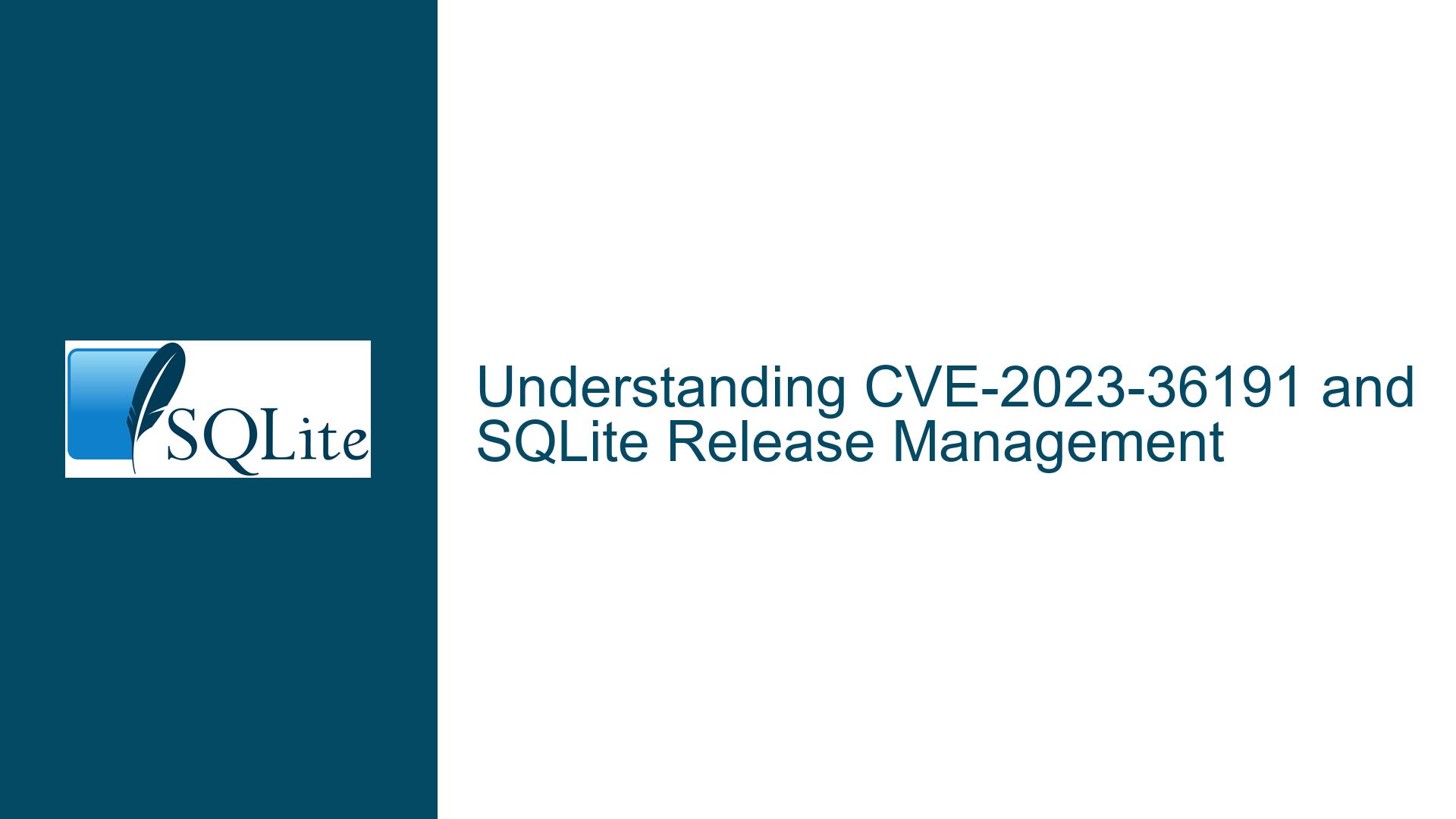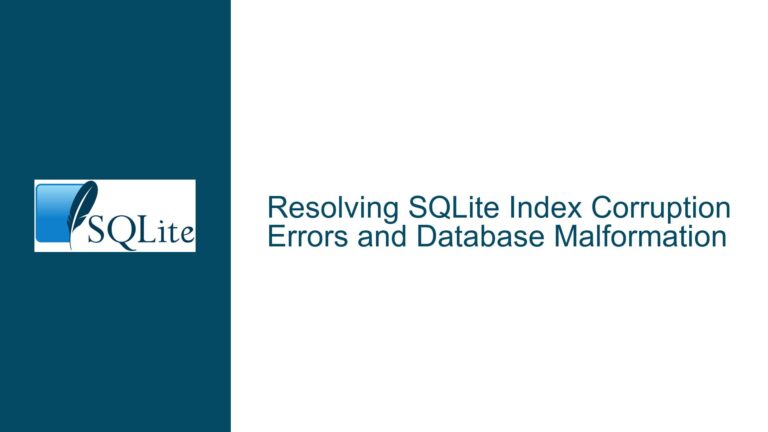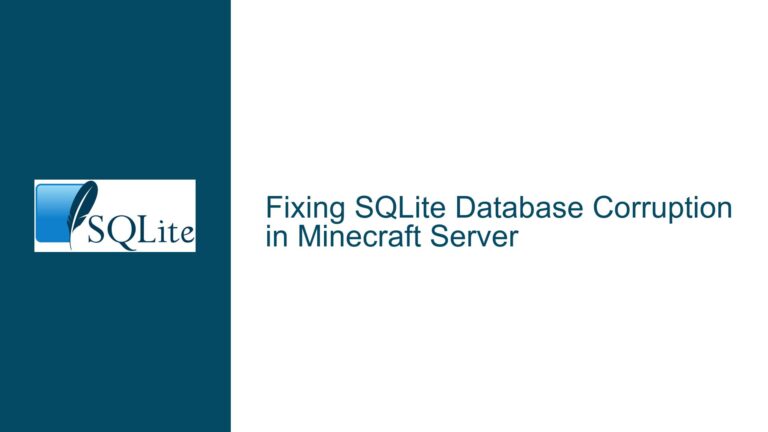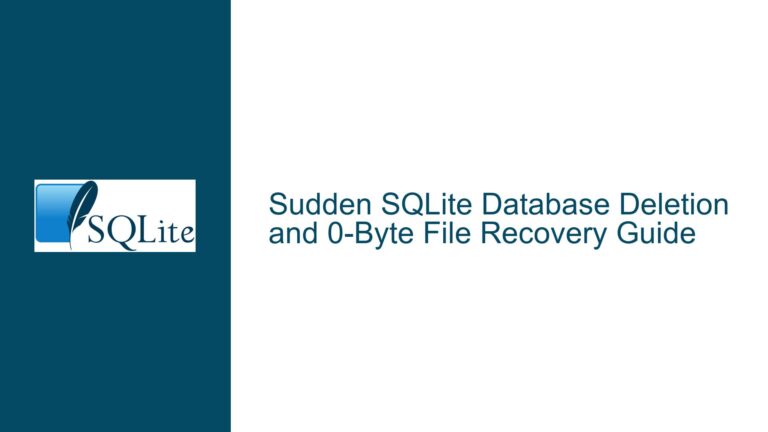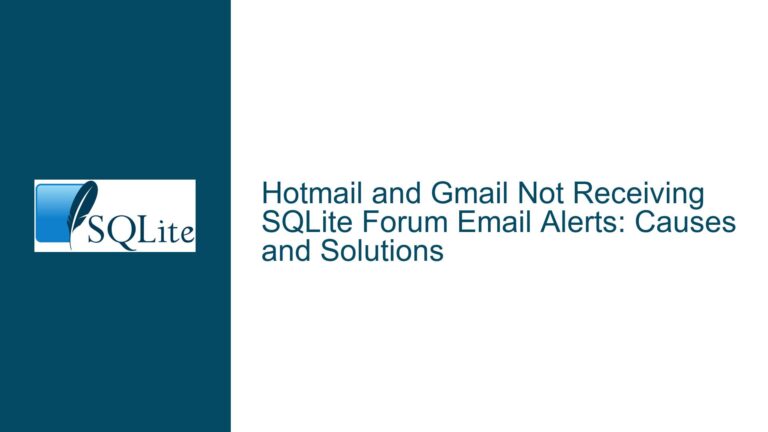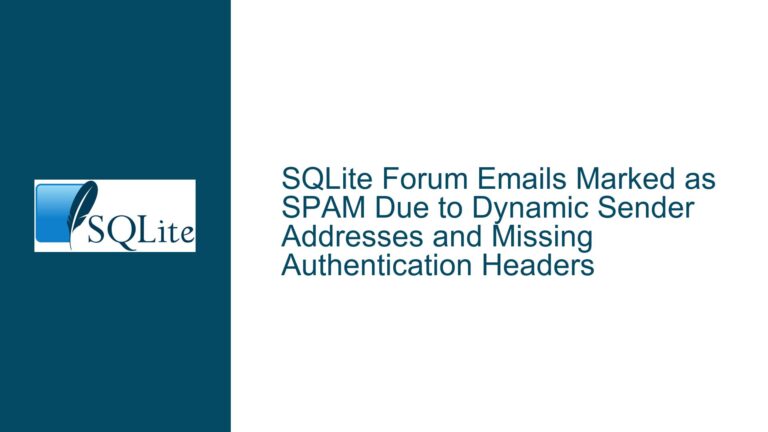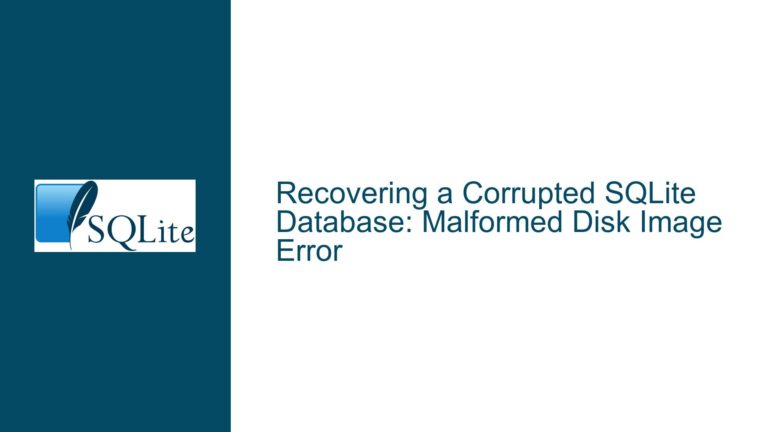CVE-2023-36191 and SQLite Release Management
Issue Overview: CVE-2023-36191 and Its Impact on SQLite
CVE-2023-36191 is a recently reported vulnerability in the SQLite command-line shell, specifically affecting the sqlite3 executable. The issue arises when the --nonce command-line option is used without providing an argument. This results in a NULL pointer dereference, causing the sqlite3 command-line tool to exit with an error. The vulnerability was assigned a "medium severity" rating by the National Vulnerability Database (NVD), which has led to concerns among users and stakeholders about the security implications and the timeline for an official fix.
The core of the issue lies in the misinterpretation of the vulnerability’s actual impact. According to Richard Hipp, the primary developer of SQLite, the bug is not exploitable in a way that could cause harm beyond a Denial of Service (DoS) scenario. The sqlite3 command-line tool simply exits with an error message when the --nonce option is misused, and the bug does not affect the core SQLite library. Furthermore, the bug was fixed in the SQLite source tree before the CVE was even published, raising questions about the necessity and timing of the CVE.
The discussion also touches on the broader topic of how CVEs are handled and perceived within the software development community. CVEs are often seen as a critical part of the security landscape, but they can sometimes be misleading or overblown, as in this case. The SQLite team’s stance is that CVEs should not be taken at face value without careful consideration of the context and actual risk involved.
Possible Causes: Misinterpretation of CVEs and Release Management Challenges
The primary cause of the confusion surrounding CVE-2023-36191 is the misinterpretation of its severity and impact. The NVD assigned a "medium severity" rating to the vulnerability, which led users to believe that it posed a significant security risk. However, as Richard Hipp explained, the bug is limited to the sqlite3 command-line tool and does not affect the core SQLite library. The vulnerability can only be triggered by misusing the --nonce option, and even then, the worst outcome is a DoS scenario where the sqlite3 tool exits with an error.
Another contributing factor is the timing of the CVE publication. The bug was fixed in the SQLite source tree 20 days before the CVE was published. This raises questions about the necessity of the CVE and whether it was warranted given that the issue had already been resolved. The delay between the bug fix and the CVE publication may have contributed to the perception that the vulnerability was more serious than it actually is.
The discussion also highlights the challenges of release management in open-source projects. SQLite releases are rigorously tested, and the process of preparing a new release can be time-consuming. This means that even after a bug is fixed in the source tree, it may take some time before the fix is included in an official release. In this case, the bug fix for CVE-2023-36191 is already available in the source tree, but users are waiting for an official release to incorporate the fix.
Finally, the conversation touches on the broader issue of how CVEs are perceived and managed within the software development community. CVEs are often seen as a critical part of the security landscape, but they can sometimes be misleading or overblown. The SQLite team’s stance is that CVEs should not be taken at face value without careful consideration of the context and actual risk involved. This is particularly important in cases where the vulnerability is limited in scope and does not pose a significant security risk.
Troubleshooting Steps, Solutions & Fixes: Addressing CVE-2023-36191 and Release Management
To address the concerns raised by CVE-2023-36191 and the broader issues of release management and CVE interpretation, the following steps can be taken:
Understanding the Scope of the Vulnerability: The first step in addressing CVE-2023-36191 is to understand its scope and impact. As Richard Hipp explained, the vulnerability is limited to the
sqlite3command-line tool and does not affect the core SQLite library. The bug can only be triggered by misusing the--nonceoption, and even then, the worst outcome is a DoS scenario where thesqlite3tool exits with an error. This means that the vulnerability is not exploitable in a way that could cause harm beyond a DoS scenario.Evaluating the Necessity of the CVE: Given that the bug was fixed in the SQLite source tree before the CVE was published, it is important to evaluate whether the CVE was necessary. In this case, the CVE may have been overblown, as the bug was already resolved and did not pose a significant security risk. This highlights the importance of carefully evaluating CVEs and considering the context and actual risk involved before taking action.
Monitoring the SQLite Release Schedule: For users who are concerned about the timeline for an official fix, it is important to monitor the SQLite release schedule. The bug fix for CVE-2023-36191 is already available in the source tree, but it may take some time before the fix is included in an official release. Users can stay informed about the status of the next release by checking the SQLite draft site and release page, as well as the commit comments in the SQLite source tree timeline.
Applying the Bug Fix Manually: For users who need the bug fix immediately, it is possible to apply the fix manually by building SQLite from the source tree. This requires some technical expertise, but it allows users to incorporate the fix without waiting for an official release. Instructions for building SQLite from source can be found in the SQLite documentation.
Reevaluating the Use of CVEs: The discussion around CVE-2023-36191 highlights the need for a broader reevaluation of how CVEs are used and perceived within the software development community. While CVEs are an important tool for identifying and addressing security vulnerabilities, they can sometimes be misleading or overblown. It is important for developers and users to carefully evaluate CVEs and consider the context and actual risk involved before taking action.
Improving Communication Around CVEs: To avoid confusion and misinterpretation, it is important for organizations like the NVD to improve communication around CVEs. This could include providing more detailed information about the scope and impact of vulnerabilities, as well as clarifying the status of bug fixes and official releases. In the case of CVE-2023-36191, better communication could have helped to avoid the confusion and concern that arose from the CVE publication.
Encouraging Responsible Reporting of Vulnerabilities: Finally, it is important to encourage responsible reporting of vulnerabilities. This includes ensuring that CVEs are only issued for vulnerabilities that pose a significant security risk, and that they are published in a timely manner after the bug has been fixed. In the case of CVE-2023-36191, the CVE was published 20 days after the bug was fixed, which may have contributed to the perception that the vulnerability was more serious than it actually is.
In conclusion, CVE-2023-36191 is a relatively minor vulnerability that has been overblown due to misinterpretation and timing issues. The bug is limited to the sqlite3 command-line tool and does not affect the core SQLite library. The bug fix is already available in the source tree, and users can apply the fix manually if needed. The discussion around this CVE highlights the need for a broader reevaluation of how CVEs are used and perceived, as well as the importance of improving communication and encouraging responsible reporting of vulnerabilities. By taking these steps, the software development community can better address security vulnerabilities and avoid unnecessary confusion and concern.
